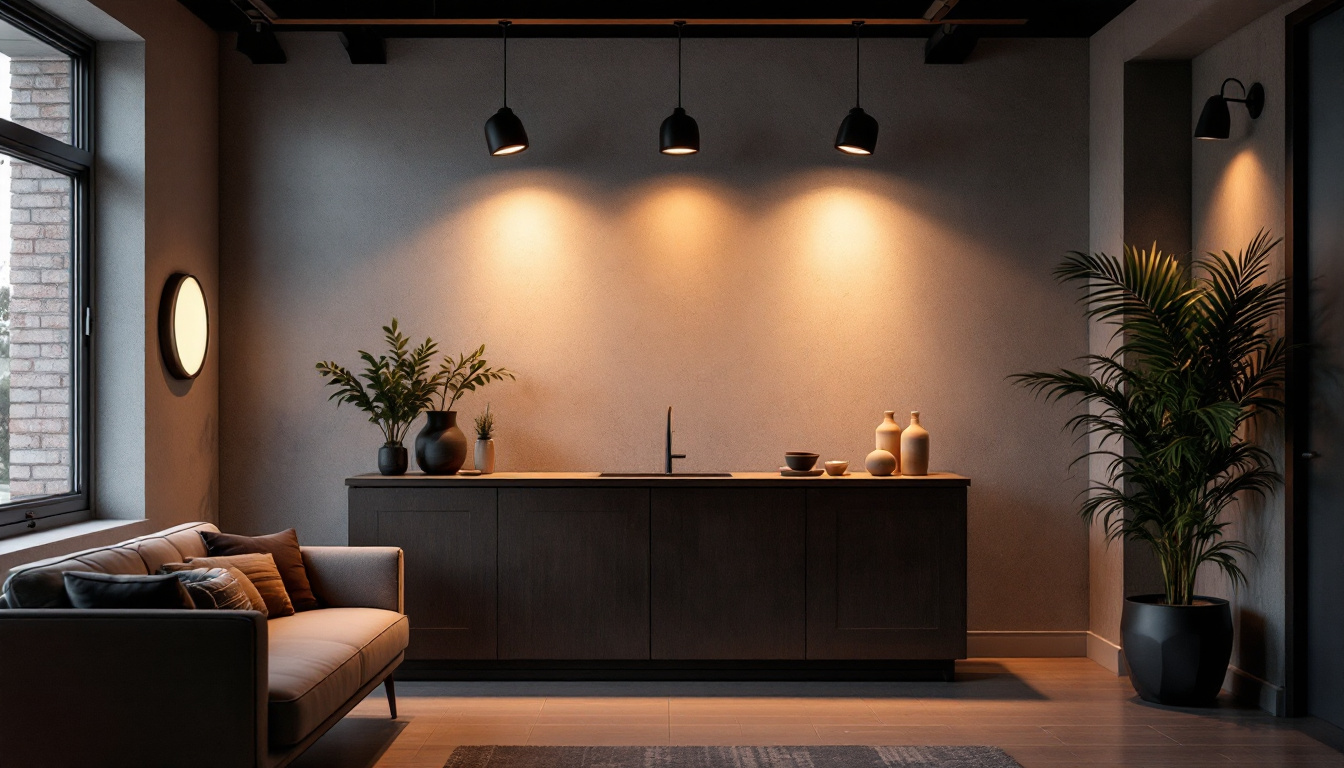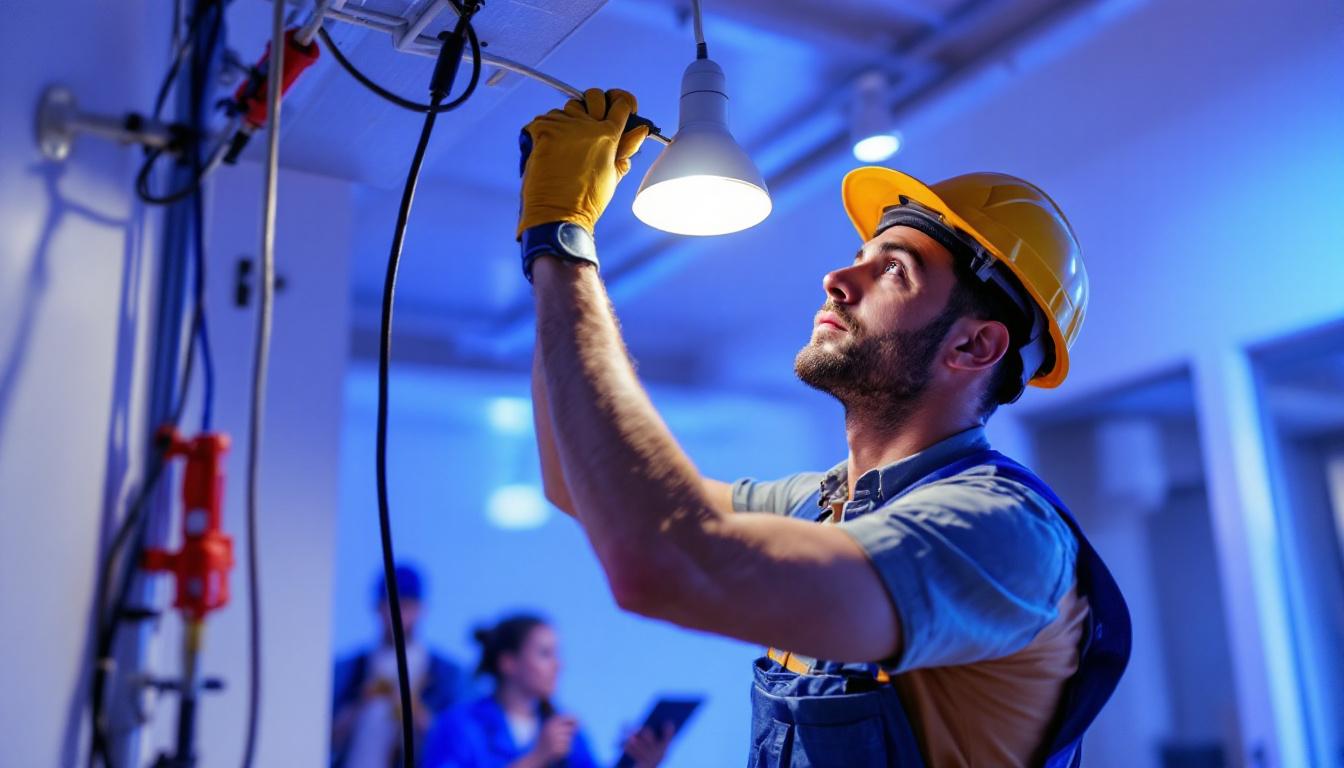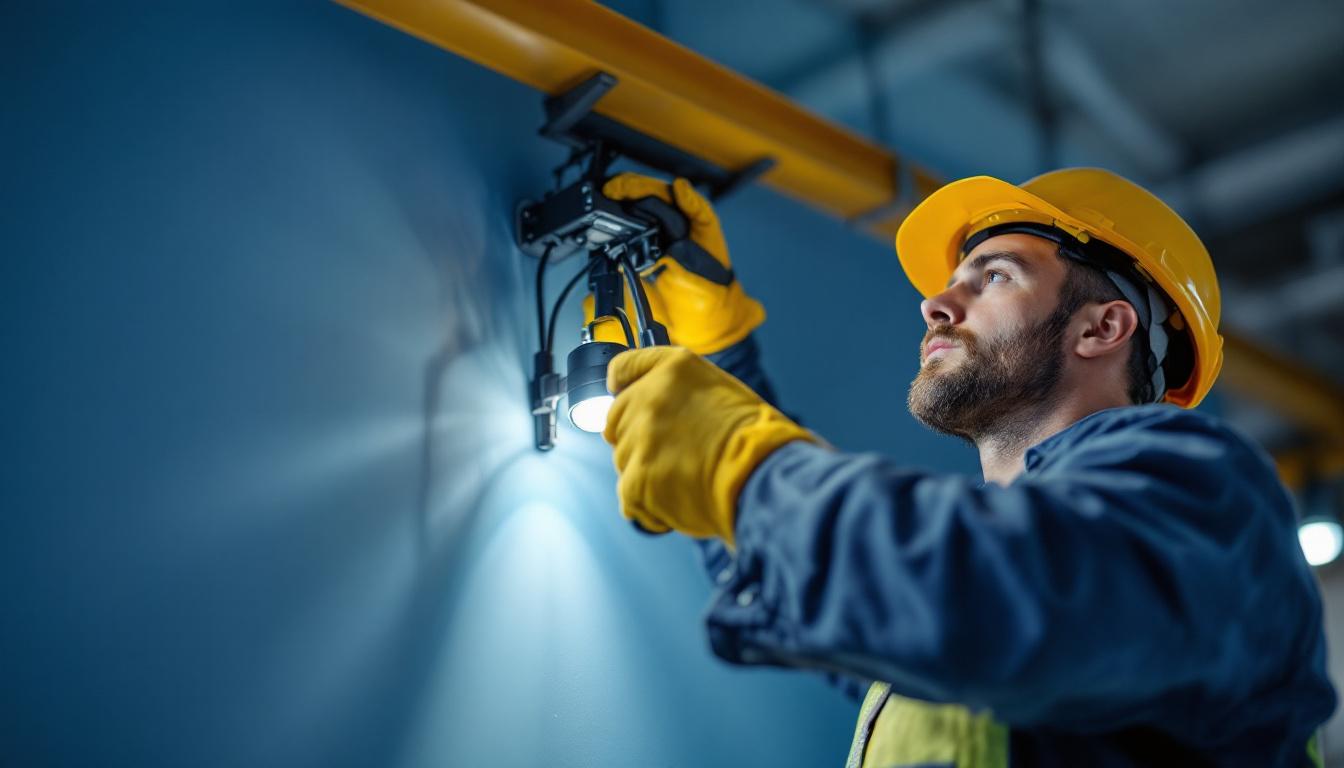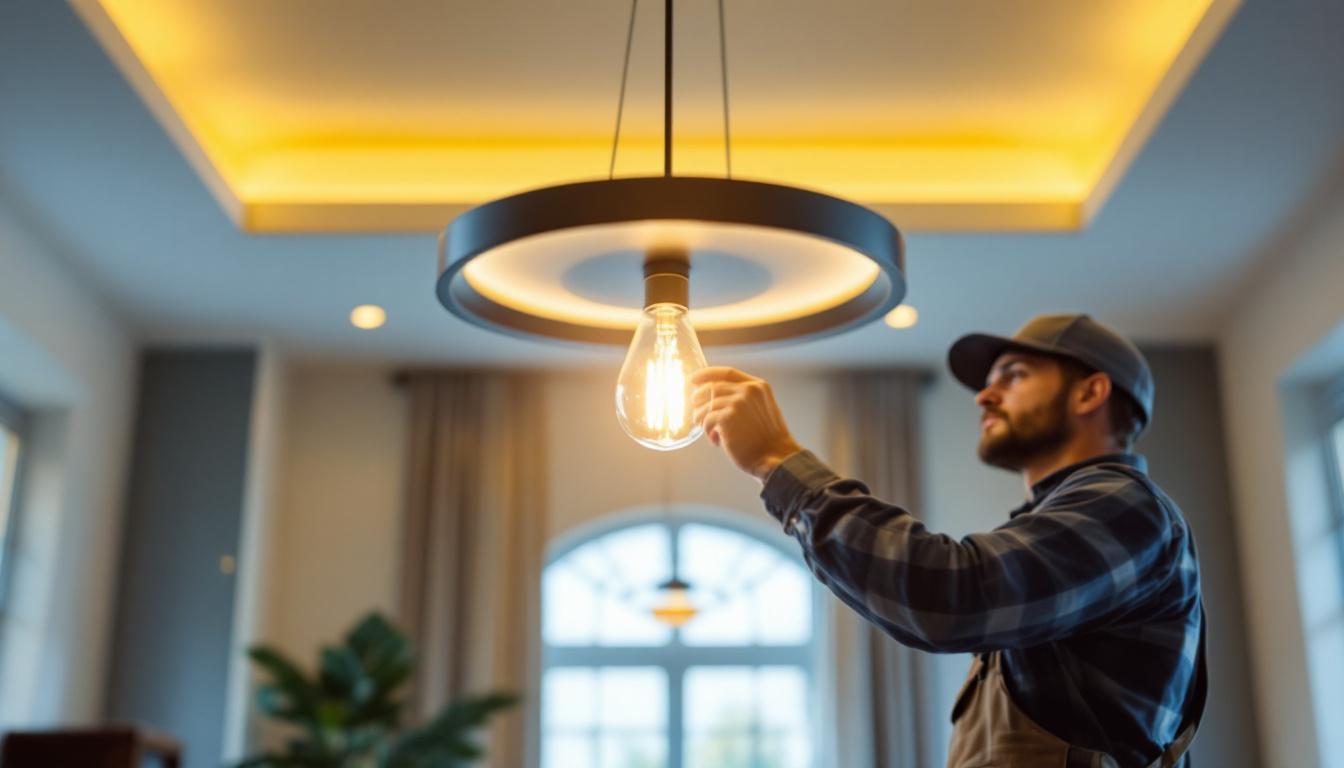
eyeball recessed lighting has gained popularity in both residential and commercial spaces due to its versatility and ability to enhance the aesthetic appeal of any room. However, to maximize its efficiency, it is essential to understand the intricacies of installation, placement, and bulb selection. This article delves into the key considerations for lighting contractors looking to optimize eyeball recessed lighting for their clients.
Eyeball recessed lighting fixtures are designed to be adjustable, allowing for directional lighting that can highlight specific areas or features within a space. This flexibility makes them ideal for accent lighting, task lighting, or even general illumination when used strategically.
Unlike traditional recessed lights that provide a fixed beam of light, eyeball fixtures can be tilted and rotated. This capability allows lighting contractors to create dynamic lighting effects that enhance the visual interest of a room. Whether illuminating artwork, architectural details, or simply providing ambient light, the adjustable nature of these fixtures offers a distinct advantage. Additionally, the sleek design of eyeball recessed lights ensures they blend seamlessly into ceilings, maintaining a clean and unobtrusive aesthetic while still delivering powerful illumination.
Eyeball recessed lighting is suitable for a wide range of applications. In residential settings, they can be used in living rooms, kitchens, and hallways to create a warm and inviting atmosphere. In commercial spaces, they serve well in retail environments, galleries, and offices, where targeted lighting can draw attention to products or enhance the overall ambiance. Furthermore, in hospitality settings like hotels and restaurants, these fixtures can be employed to create intimate dining experiences or highlight unique decor elements, contributing to a memorable guest experience. Their versatility also extends to outdoor applications, where they can be used to accentuate landscaping features or architectural outlines, adding depth and dimension to exterior spaces.
To achieve maximum efficiency with eyeball recessed lighting, several factors must be considered during the design and installation process. These include fixture selection, placement, and the choice of light sources.
When selecting eyeball recessed lighting fixtures, it is crucial to consider the quality of the materials and the design of the fixture. High-quality fixtures not only offer better performance but also ensure longevity. Look for options that provide a wide range of adjustability, allowing for greater flexibility in directing light where it is needed most.
Additionally, consider the trim style of the fixture. Different trims can affect how light is distributed and can create various visual effects. For instance, a baffle trim can help reduce glare, while a reflector trim can enhance brightness. Understanding these nuances will enable contractors to make informed decisions that align with the specific needs of the project. Moreover, the finish of the trim can also influence the overall aesthetic; a matte finish may provide a softer look, while a polished finish can add a touch of modern elegance, making it essential to choose a style that complements the surrounding decor.
The placement of eyeball recessed lighting is critical to achieving optimal results. A common mistake is to install fixtures too close together or too far apart. The goal should be to create a balanced distribution of light that minimizes shadows and enhances visibility.
When determining placement, consider the function of the space. For instance, in a kitchen, fixtures should be positioned to illuminate work areas effectively, while in a living room, they can be used to highlight artwork or architectural features. A well-thought-out layout will ensure that light is distributed evenly and enhances the overall aesthetic of the space. Additionally, taking into account the height of the ceiling can greatly influence the effectiveness of the lighting; higher ceilings may require fixtures to be spaced further apart to maintain adequate illumination, while lower ceilings might benefit from closer placement to create a cozy atmosphere.
The choice of light source plays a significant role in the efficiency and effectiveness of eyeball recessed lighting. LED bulbs are often the preferred option due to their energy efficiency, long lifespan, and low heat output. They also come in various color temperatures, allowing contractors to create the desired ambiance.
Consider the color rendering index (CRI) of the bulbs as well. A higher CRI value indicates that the light source will render colors more accurately, which is particularly important in spaces where color fidelity is crucial, such as galleries or retail environments. Furthermore, the wattage and lumens output should also be factored into the decision-making process. Selecting bulbs with the appropriate lumens ensures that the space is adequately lit without overwhelming brightness, creating a comfortable environment for occupants. As technology advances, smart lighting options are becoming increasingly popular, allowing for customizable settings that can adapt to different activities or moods, making them an excellent choice for modern spaces.
In an era where energy efficiency and sustainability are paramount, optimizing eyeball recessed lighting can significantly contribute to reducing energy consumption. By selecting energy-efficient fixtures and bulbs, contractors can help clients lower their energy bills while also minimizing their environmental impact.
Integrating smart lighting technology into eyeball recessed lighting systems can further enhance energy efficiency. Smart controls allow users to adjust lighting levels based on the time of day or occupancy, ensuring that lights are only used when needed. This not only conserves energy but also extends the lifespan of the fixtures and bulbs.
Additionally, consider incorporating sensors that automatically adjust lighting based on natural light levels. This can be particularly effective in spaces with large windows or skylights, where natural light can significantly reduce the need for artificial lighting during the day.
lighting controls, such as dimmers and timers, can enhance the efficiency of eyeball recessed lighting. Dimming the lights can create a more comfortable atmosphere while also reducing energy consumption. Timers can ensure that lights are turned off when not in use, further contributing to energy savings.
Educating clients on the benefits of these controls can lead to greater satisfaction and a more efficient lighting system overall. Providing options for customization can also enhance the user experience, allowing clients to tailor their lighting to their preferences.
Beyond functionality, the design aspect of eyeball recessed lighting should not be overlooked. The aesthetic appeal of lighting fixtures can significantly influence the overall look and feel of a space. Therefore, it is essential to consider how these fixtures will integrate with the existing design elements.
Eyeball recessed lighting can complement various interior design styles, from modern and minimalist to traditional and eclectic. When selecting fixtures, consider the overall theme of the space. Sleek, contemporary designs may work well in modern settings, while more ornate fixtures may be better suited for traditional interiors.
Additionally, the finish of the fixtures can impact their visual appeal. Options such as matte black, brushed nickel, or polished chrome can enhance the design and create a cohesive look throughout the space.
Using eyeball recessed lighting strategically can create visual interest and depth in a room. By highlighting architectural features, artwork, or textured surfaces, contractors can draw the eye and create focal points that enhance the overall design.
Consider layering different types of lighting, such as combining eyeball recessed lights with pendant fixtures or wall sconces. This approach can create a more dynamic and inviting atmosphere, allowing for a variety of lighting effects depending on the time of day or activity.
Even experienced lighting contractors can fall victim to common pitfalls when working with eyeball recessed lighting. Awareness of these mistakes can help ensure a successful installation and satisfied clients.
One common mistake is not considering the beam angle of the fixtures. A narrow beam angle may be suitable for accent lighting, but it can create harsh shadows if used for general illumination. Conversely, a wide beam angle may wash out details in a space. Understanding the appropriate beam angles for different applications is crucial for achieving the desired lighting effect.
Ceiling height can significantly impact the effectiveness of eyeball recessed lighting. In spaces with higher ceilings, fixtures may need to be spaced further apart to ensure adequate illumination. Conversely, in lower ceilings, fixtures should be installed closer together to avoid dark spots. Taking ceiling height into account during the planning phase can prevent issues down the line.
Optimizing eyeball recessed lighting requires a thoughtful approach that encompasses fixture selection, placement, bulb choice, and design considerations. By understanding the unique characteristics of these fixtures and implementing strategies for energy efficiency and aesthetic appeal, lighting contractors can deliver exceptional results for their clients.
As the demand for versatile and efficient lighting solutions continues to grow, mastering the art of eyeball recessed lighting will position contractors as leaders in the field. By avoiding common mistakes and embracing innovative technologies, they can create spaces that are not only beautifully lit but also energy-efficient and sustainable.
In the ever-evolving world of lighting design, staying informed about the latest trends and technologies will ensure that contractors can meet the diverse needs of their clients while delivering high-quality results. With careful planning and execution, eyeball recessed lighting can transform any space into a well-lit, inviting environment.
Ready to elevate your lighting projects with the efficiency and elegance of eyeball recessed lighting? Look no further than LumenWholesale, where we provide contractors with the highest quality, spec-grade lighting solutions at unbeatable wholesale prices. Say goodbye to local distributor markups and hello to our extensive selection that meets rigorous industry standards. With free shipping on bulk orders, you can trust that you’re getting premium lighting at the best value — all without hidden fees or compromises. Don’t miss out on the perfect blend of quality, affordability, and convenience. Wholesale Lighting at the Best Value is just a click away. Transform your spaces with LumenWholesale today.

Discover essential insights and expert tips in “Lighting Solution: What Every Lighting Contractor Should Know.” This article delves into innovative techniques, industry standards, and the latest technologies that every lighting professional needs to excel in their craft.

Discover the crucial role of grounding wires in light fixtures and why they are essential for lighting contractors.

Discover how the innovative Gripper Lock system can enhance efficiency and profitability for lighting contractors.

Discover how sanctuary light fixtures can illuminate new business opportunities for lighting contractors.